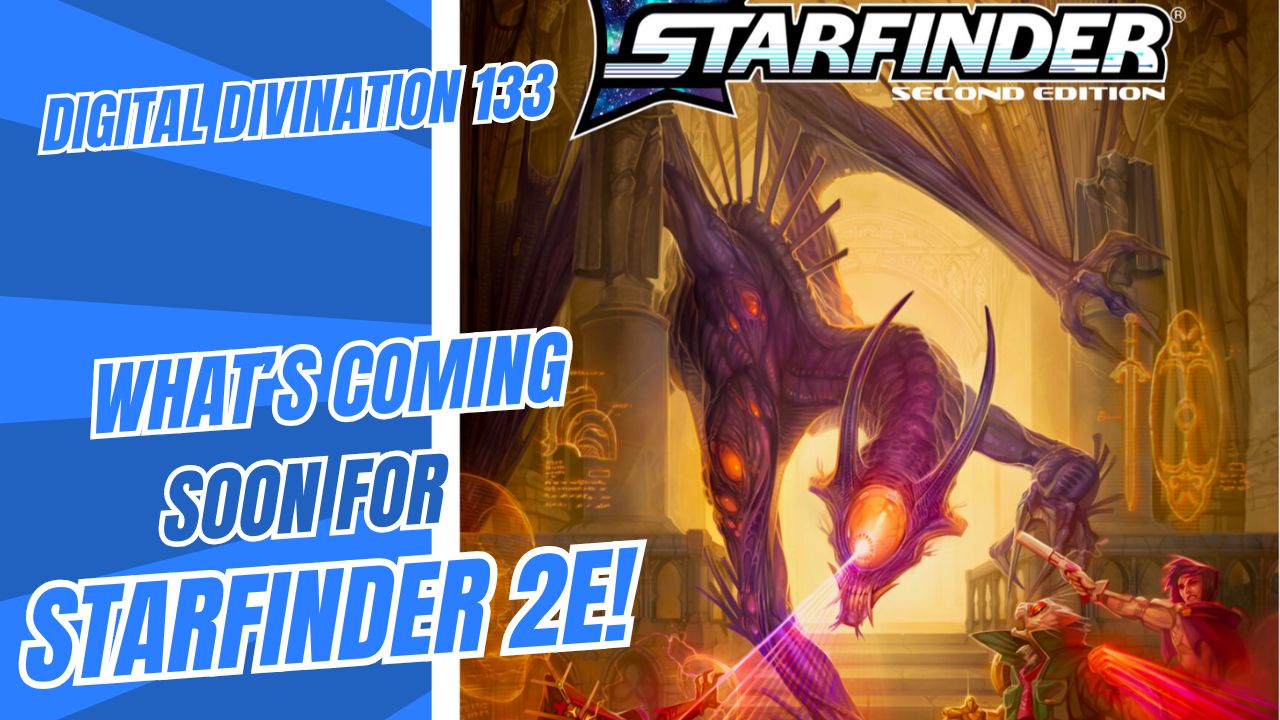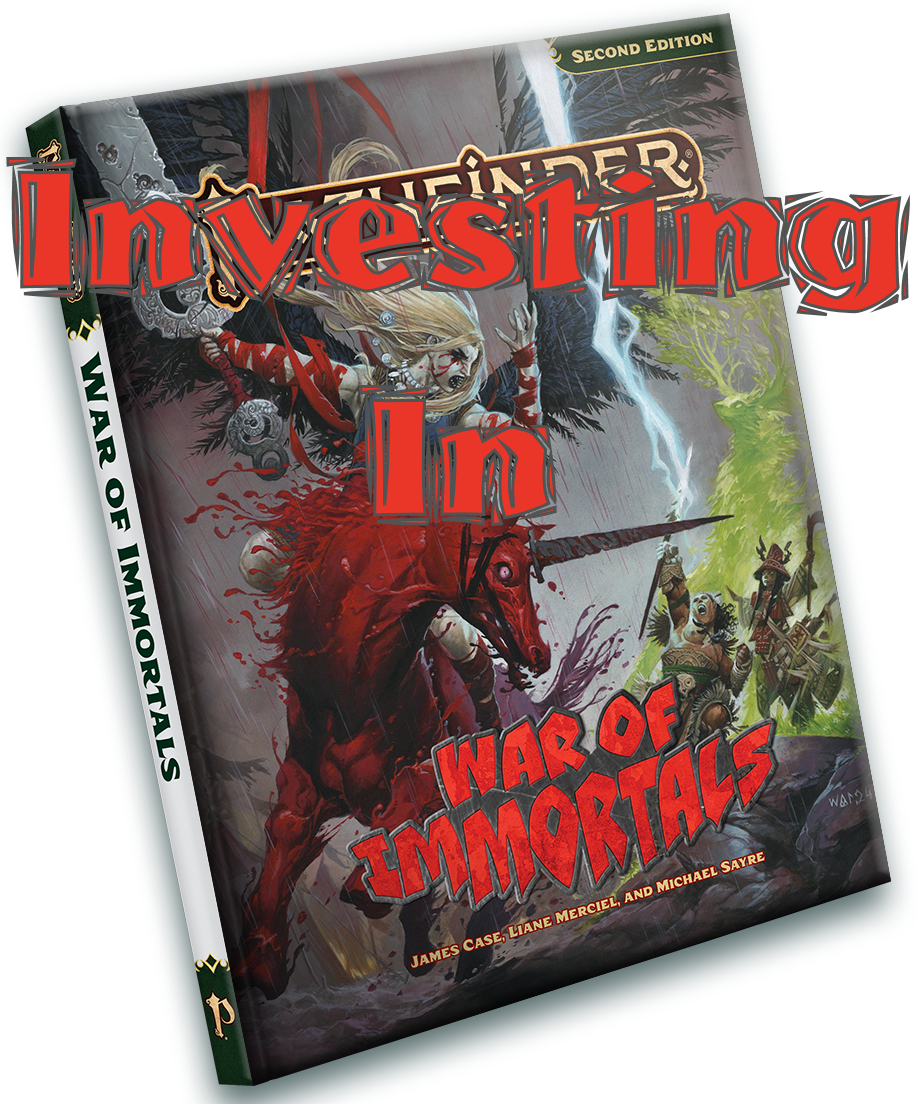Publisher: Wizards of the Coast
After trekking though geographical extremes like the arctic, the desert, and the sea, the environment series explores the urban in Cityscape.
Expectations
I had many opportunities to purchase Cityscape that I did not act upon. Flipping through it at a gaming store, I never found myself engaged. It wasn’t until I started DMing The World’s Largest City that I felt the need to get this book. Now that I have it, I expect to use it heavily in that campaign. I just worry that I won’t enjoy it.
At a Glance
Cityscape’s cover is deceptively complex. The landscape style profile box that is the signature of the environment series is obviously filled corner to corner with an expansive city, focusing on what looks like a wickedly ornate church with a powerful green glow. Upon closer inspection, there is not a sign of life on any street, in any building, anywhere except a combat on the roof of the church. What’s particularly amazing is that the combatants are so small they are easy to miss, and yet detailed enough to be identified as Ember, Hennet, Lidda, and Regdar, the iconic characters from the Player’s Handbook. Surprisingly effective for such a subtle piece of art.
Cityscape’s major failing from an art perspective is the cartography. The overhead views of the sample cities fail to convey each city’s unique qualities. Other than Cliffside, the five cities just look like blobs of buildings. The maps are also from such a high perspective that the map key vaguely indicates large expanses of the city in a way that is hard for a DM to use.
The rest of the artwork is limited and uninspired. Jon Hodgson’s Elf City evokes a sense of natural yet alien, and Howard Lyon’s Where The Hell Did That Come From? delivers an emotion worthy of the piece’s title. Other than that, many pages go by with no art whatsoever and when something visual is included it isn’t much more than colourful filler.
Highlights
NPC Encounters
Has an urban adventure ever been played that did not include an encounter with city guards? And what if a fight breaks out with a shop owner? The NPC encounters provided are intuitive, generic, quick to reference and easy to use.
Handy Sidebars
Need the name of an inn quick? Tired of having all your social scenes in a tavern? Don’t know what renting a room long term should cost? There are numerous sidebars that are good for ideas and make a DM’s life a little easier.
Stays on Topic
Cityscape certainly maintains its focus on urban adventuring and urban life. This may not seem like much of a highlight, it’s true, which brings us to…
Low Points
Poorly Written
Why do weathermen act like comedians on local news broadcasts? Because without a little energy and a few jokes, the weather is dull. Cityscape reads like a weatherman with no sense of humour. It blandly states information without capturing the imagination or drawing the reader into this fantasy world that is so similar to theirs and yet so wonderfully different.
Dullness is only the first, possibly most forgivable, writing problem this sourcebook suffers from. It is also inconsistent. D&D being a game, word use is very important. If a novel sometimes describes a cult as an organization other times as a church, that is acceptable. When a sourcebook codifies organizations and churches as separate rules to be used differently, saying a cult is both makes running an encounter more difficult. A ghost and a ghoul may be similar in many ways, but the Monster Manual assigns then different rules and therefore they are given different names. Had organization cults been named something different than church cults, such as cabal, confusion could have been avoided.
Provides the Wrong Information
Bafflingly, Cityscape is at the same time vague and too specific. The entry on storms/floods explains what storms and floods are as though the reader were a child from the desert, but offers no rules on how they are destructive or how to run such a complicated encounter. It only says that a flood is a bad thing for cities, assuming the average player has no idea what floods are, but once informed they can devise their own rules for how waves can destroy buildings, how to handle a panicked population, and what characters like barbarians and fighters can do in such a situation.
The entry on contacts actually mocks the rules as they put them forth, making a decent argument for why roleplaying situations should not have hard rules assigned to them as they assign hard rules to a roleplaying situation. What’s worse, there really are no rules for contacts beyond how many a PC should be allowed. There are examples but no explanations. Allastir Whitemane will provide PCs asylum once, Zirra Shalhab with appraise a nonmagic item for them once a week. There are no charts outlining what value favours have or how to balance them. Outside the eight examples, the DM is left to decide what seems fair on their own, making them happy to have purchased a sourcebook that tells them to make up their own rules.
Bad Crunch
This is a combination of Poorly Written and Provides the Wrong Information. Most of the spells and feats are dull. The prestige classes are too specific. The crunch feels like it belongs to another game entirely. Take the rules for a decrepit building. If the building takes damage, roll a d20. If the result is at least the damage dealt, the building collapses. Think about that. If 1 point of splash damage hits the way, the building is guaranteed to fall apart. If a fireball explodes within the building, as long as it does more than 20 damage, the old, abandoned structure supported by rotten wood and crumbling brick is fine. Essentially a decrepit build can inconsequentially sustain 21 to infinity points of damage. Put away your siege engines and take out your slings because that is the most illogical rule in the entire game, and it also happens to ignore the existing rules like hit points and saving throws that the 3.5 universe is run on.
Juicy Bits
Sculpt Spell is a metamagic feat that allows a player to modify an spell’s area of effect .
The Trip to the Healer interlude is a DM’s dream, outlining which ailments are cured by what spells and who can cast them. Know who to call on if you have a disease? According to this chart, you need a 5th level cleric, a 5th level druid, or an 11th level ranger to cast remove disease, and it will cost you 280 gp.
Throng of children is a unique threat that adds a psychological edge to a mob encounter.
Personal Experience
I have run city games but without the help of Cityscape. Reading through it offered few to no tips to improve my urban adventures.
Overall
Ideally Cityscape should have made city building as fun as character building, complete with city character sheet. Instead, it is a mix of abridged textbook and sarcastic notes accidentally taken seriously and printed. It is hard to believe Wizards of the Coast released this sourcebook. There is very little useful information in Cityscape that hasn’t already been printed in the Dungeon Master’s Guide and Dungeon Master’s Guide II. It isn’t fun to read, it isn’t insightful, and its feelings about the durability of a decrepit building are inverse to reality.
If You Liked This Book…
Building a City is a free webenhancement for the Dungeon Master’s Guide.
Dungeonscape is the next book in the environment series, with writing and content of such higher caliber it puts Cityscape to shame thrice.
Date Released: November 2006




Leave a Reply